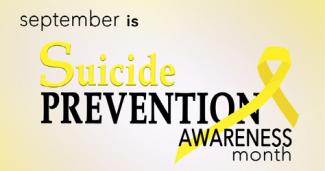Preventing Suicide: Connecting At-Risk Individuals to Mental Health Resources
Earlier this summer, the Centers for Disease Control released a report showing that suicide rates between 1999 and 2016 have increased more than 30 percent in half of the states and by about 16 percent in the District. Over half of those who died by suicide had no diagnosed mental health conditions, demonstrating how important it is to connect someone with depression or thoughts of suicide to mental health resources.
As part of Suicide Prevention Month, here are some ways you can help someone struggling with thoughts of suicide access mental health resources—it’s as easy as TALK: Tell-Ask-Listen-KeepSafe.
TELL: Recognize telltale signs
People who are contemplating suicide will likely exhibit telltale signs:
- Actions: Carelessness, giving away cherished things, saying goodbye, isolating themselves from friends, moodiness, or missing work.
- Conversation: Talk of hopelessness, tiredness, being a burden, having no purpose, or remarks that they have it “all figured out” or “have a way out.”
- History: Personal or family history of suicide or loss of job, relationship, or loved one.
If someone is exhibiting these telltale signs, reach out and ask about the behavior that concerns you.
ASK: Find out if the person is suicidal
Ask direct questions like “Are you experiencing depression or thinking about suicide?” You must show that you are not afraid to use the words “depression” and “suicide.” You can justify your question by listing the telltale signs that you observed. Be sure to remain calm, do not seem judgmental, and do not act shocked. If the person’s answer is not clear, get them to talk about their feelings to better gauge their intentions.
LISTEN: Let the person express their feelings
Your job is not to fix any of the problems the person describes—your job is simply to give the person all of your attention. Maintain eye contact and tell them that the discussion is important to you. Do not be judgmental, angry, or impatient, and never promise to keep what they are telling you a secret!
KEEPSAFE: Connect the person to professional support
If you feel the person is at risk of suicide, connect them to professional support. In a truly urgent situation where time is of the essence, do not hesitate to call 911. In less urgent situations, you can say, “I am not going to take the chance of losing you” or “I want to get you support from someone who is more skilled.” Then, immediately call one of several numbers:
- Access Helpline: 1-888-793-4357
- Suicide Lifeline: 1-800-273-TALK
- Suicide Lifeline (Spanish): 1-800-628-9494
- Mobile Crisis: 202-673-9300 (9 am to 1 am)
- ChAMPS (Child and Adolescent Mobile Psychiatric Service): 202-481-1440
- LGBTQ Lifeline: 1-866-488-7386
Remember that while it’s important to recognize the telltale signs of suicide, people mask depression differently. Don’t be afraid to reach out and TALK!
OAG works to protect residents of the District from harm by facilitating access to mental health treatment. OAG connects residents to treatment through 1) appointing a guardian and/or conservator for incapacitated individuals and 2) committing individuals for emergency treatment who are likely to injure themselves or others.

